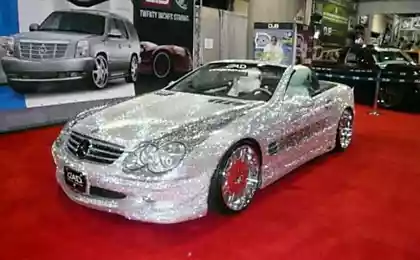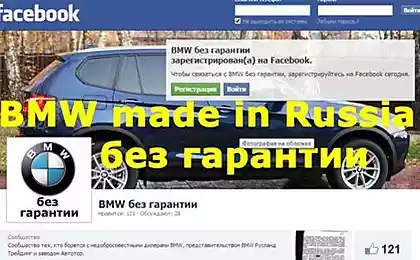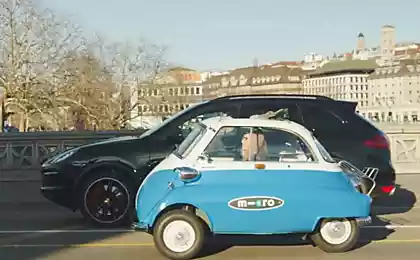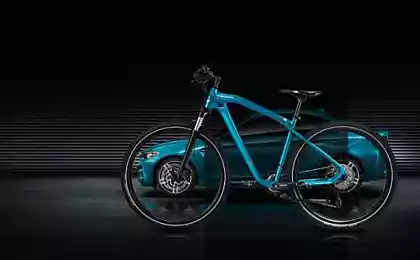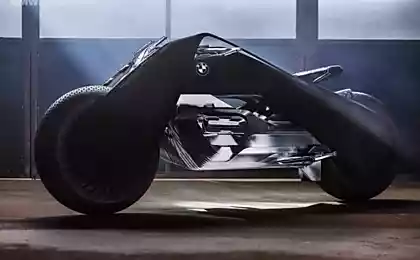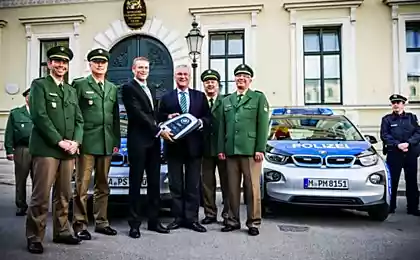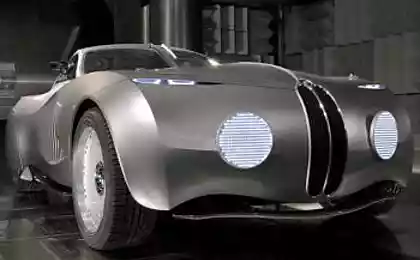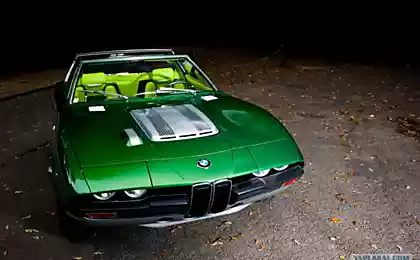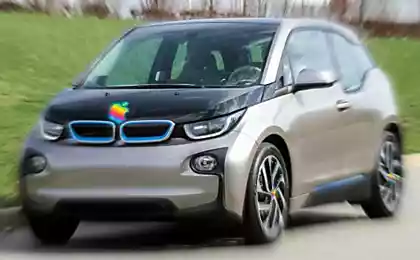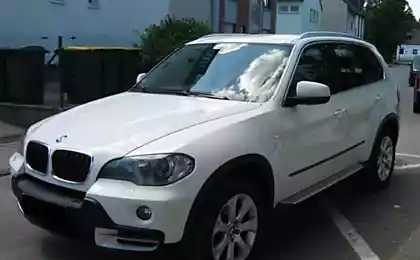776
Bmw Isetta - where to begin Boomers
8 deep historical ph
_________
50 years ago, in March 1955, BMW was born a second time. Tiny called Isetta, and she had the Italian genes. It is believed that the genus "boomers" owes its revival is this dwarf.
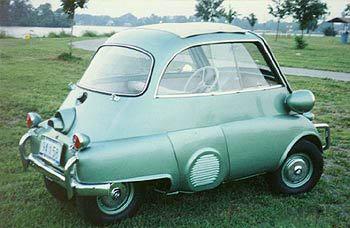
It is known that the story develops in a spiral, and the history of car design is likely to have just entered the second round - in a sequence of design preferences of the last years there has been a distinct deja vu: the box jeeps refer to the 20 th year, streamlined "drops" - to 40-m, Smart - to the 50th.
It was in the early 50's defeated Germany rose to his feet. Then the German national idea was to survive and get up at any cost. To do this it was necessary to work and, therefore, to move. At least for a scooter.
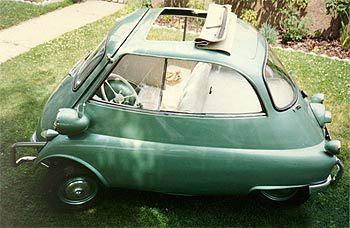
German survivors, and, most importantly, a German had an inexpensive means of transportation, possibly more lovely than the tin can: Still Germany - cultural country. That's why such well-known suppliers of the Luftwaffe as Messerschmitt, Henkel and, of course, BMW, rushed to build a subcompact. Born to fly had to crawl. It did not at all.
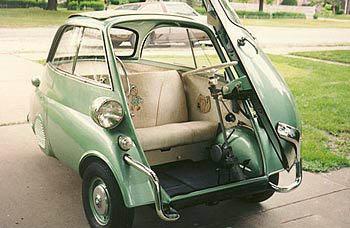
At the same time the Italian firm Iso, nabivshaya hand scooters, built strange double machine. They are distinguished from other similar beveled front, is a spacious door. It opens with the steering wheel and dashboard. The similarities linking domestic refrigerator complemented rear engine with a capacity of 9 liters. from. Italian Iso was going to go to the production of cars of higher class and was ready to sell the license. So BMW's engineers noticed at the Geneva Motor Show in 1954. The Isetta was on the Munich line. Almost simultaneously, the Italian version went into production in England and Brazil. And the modification was English and her tricycle could ride on the motorcycle rights.
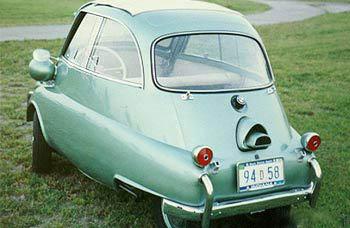
Germans also perform some tuning Italian dvuhmestki. In their version of the engine with a capacity of 12 liters. from. (by the way, a lot more powerful classmates - dvuhloshadnogo Citroen) allowed crumb BMW accelerate to 30 km / h in 11 seconds and if the driver had a strong nervous system, was able to give the car a top speed of 85 km / h.
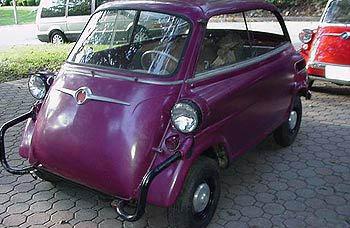
Isetta once charmed the Germans, being inexpensive, robust and weatherproof. And most importantly, its originality and dapper allow somehow "kill" the gap between the cheap stuff and normal cars. In the first year it sold 12 thousand. Cars, and in 1957 - already 40 thousand. Later, the engine power was increased. In the late 50s there was a four-seater BMW model 600, but it changed pretty quickly BMW 700.
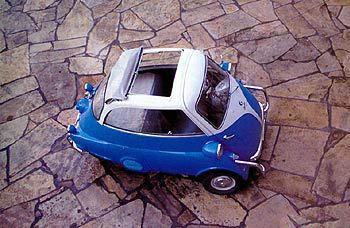
In 1962, the production of Isetta finished, as in Europe loomed a new "star» - Mini. But its mission Isetta fulfilled. Because of the sanctions Allies BMW was able to begin production of cars only in 1951. Her first post-war models 501 and 502 did not find a market. BMW engineers were working on the next series of fast cars, but to deploy their production needed money. Successful project understudy for mass demand would give the company the necessary financial resources. A foreign Isetta «right», opening the way stupid passion "native» BMW.

Paradoxically, war and disasters often cause life to creative solutions and Deathforged appear awfully nice of creation: BMW, SAAB, Subaru. Even the damned "Messerschmitt" in the '50s turned its compact car: remarkably elegant cuttlefish with lights, beads, reminiscent of the cockpit fighter openwork carved from the body of the aircraft (it was called "Tiger", but the tiger was clearly a "paper" and did not bomb ). Did anyone guess charge of domestic defense industry to build cars hand-made, and not a pressure cooker and pasta line conversion of military-industrial complex 80 would give different results.
Many great brands as Panhar or Ispano Suiza at some point traded venture auto business on a more predictable construction of armored vehicles and machinery, ever losing the charm avtobrenda. Experts believe that BMW is unlikely to be raised, if not a breakthrough with the Isetta. That's why in a blaze streaking "Boomer" will always be a little bit of Italian charm.
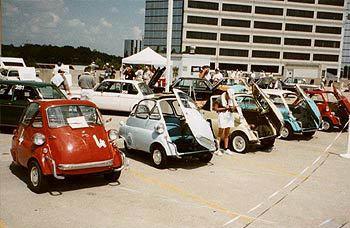
Source:
_________
50 years ago, in March 1955, BMW was born a second time. Tiny called Isetta, and she had the Italian genes. It is believed that the genus "boomers" owes its revival is this dwarf.

It is known that the story develops in a spiral, and the history of car design is likely to have just entered the second round - in a sequence of design preferences of the last years there has been a distinct deja vu: the box jeeps refer to the 20 th year, streamlined "drops" - to 40-m, Smart - to the 50th.
It was in the early 50's defeated Germany rose to his feet. Then the German national idea was to survive and get up at any cost. To do this it was necessary to work and, therefore, to move. At least for a scooter.

German survivors, and, most importantly, a German had an inexpensive means of transportation, possibly more lovely than the tin can: Still Germany - cultural country. That's why such well-known suppliers of the Luftwaffe as Messerschmitt, Henkel and, of course, BMW, rushed to build a subcompact. Born to fly had to crawl. It did not at all.

At the same time the Italian firm Iso, nabivshaya hand scooters, built strange double machine. They are distinguished from other similar beveled front, is a spacious door. It opens with the steering wheel and dashboard. The similarities linking domestic refrigerator complemented rear engine with a capacity of 9 liters. from. Italian Iso was going to go to the production of cars of higher class and was ready to sell the license. So BMW's engineers noticed at the Geneva Motor Show in 1954. The Isetta was on the Munich line. Almost simultaneously, the Italian version went into production in England and Brazil. And the modification was English and her tricycle could ride on the motorcycle rights.

Germans also perform some tuning Italian dvuhmestki. In their version of the engine with a capacity of 12 liters. from. (by the way, a lot more powerful classmates - dvuhloshadnogo Citroen) allowed crumb BMW accelerate to 30 km / h in 11 seconds and if the driver had a strong nervous system, was able to give the car a top speed of 85 km / h.

Isetta once charmed the Germans, being inexpensive, robust and weatherproof. And most importantly, its originality and dapper allow somehow "kill" the gap between the cheap stuff and normal cars. In the first year it sold 12 thousand. Cars, and in 1957 - already 40 thousand. Later, the engine power was increased. In the late 50s there was a four-seater BMW model 600, but it changed pretty quickly BMW 700.

In 1962, the production of Isetta finished, as in Europe loomed a new "star» - Mini. But its mission Isetta fulfilled. Because of the sanctions Allies BMW was able to begin production of cars only in 1951. Her first post-war models 501 and 502 did not find a market. BMW engineers were working on the next series of fast cars, but to deploy their production needed money. Successful project understudy for mass demand would give the company the necessary financial resources. A foreign Isetta «right», opening the way stupid passion "native» BMW.

Paradoxically, war and disasters often cause life to creative solutions and Deathforged appear awfully nice of creation: BMW, SAAB, Subaru. Even the damned "Messerschmitt" in the '50s turned its compact car: remarkably elegant cuttlefish with lights, beads, reminiscent of the cockpit fighter openwork carved from the body of the aircraft (it was called "Tiger", but the tiger was clearly a "paper" and did not bomb ). Did anyone guess charge of domestic defense industry to build cars hand-made, and not a pressure cooker and pasta line conversion of military-industrial complex 80 would give different results.
Many great brands as Panhar or Ispano Suiza at some point traded venture auto business on a more predictable construction of armored vehicles and machinery, ever losing the charm avtobrenda. Experts believe that BMW is unlikely to be raised, if not a breakthrough with the Isetta. That's why in a blaze streaking "Boomer" will always be a little bit of Italian charm.

Source:
